NASA’s New Space Taxis
The astronauts’ next spacecraft won’t be government property.
/https://tf-cmsv2-smithsonianmag-media.s3.amazonaws.com/filer/41/59/41597509-a84c-47a3-90bb-d779784e1a77/36b_sep2018_16763231836_10e657c7a4_live.jpg)
Space travel is about to change. Ever since Yuri Gagarin’s pioneering flight in 1961, only spacecraft built by nation states have carried humans into orbit. But sometime soon, as early as next year, the world’s first private, crewed spaceship will take off from Kennedy Space Center in Florida and head for the International Space Station.
This article appears in the feature series American Spacelines. Click to read more about the future of U.S. human spaceflight.
For many, the most important aspect of that first flight will be the long-awaited resumption of human spaceflight from U.S. soil. It will mark the end of a painful hiatus since the last space shuttle mission in 2011, during which American astronauts have had to hitch rides aboard Russian spacecraft. But independence from Russian launch schedules is not the only thing Americans will have to celebrate. With the first launch in its Commercial Crew Program, NASA is trying something new: opening space exploration to private corporations and astronauts. The 21st century space race begins not as a contest between global superpowers but as a competition between companies. Boeing and SpaceX are the first rivals, building spacecraft to fly six crewed NASA missions each to the ISS.
As long as their spaceships meet NASA requirements, the companies have had free rein to design and manufacture them however they want, within a fixed government budget. Critically, Boeing and SpaceX will own and operate their spacecraft themselves, free to sell flights to other countries, companies, and even individuals.
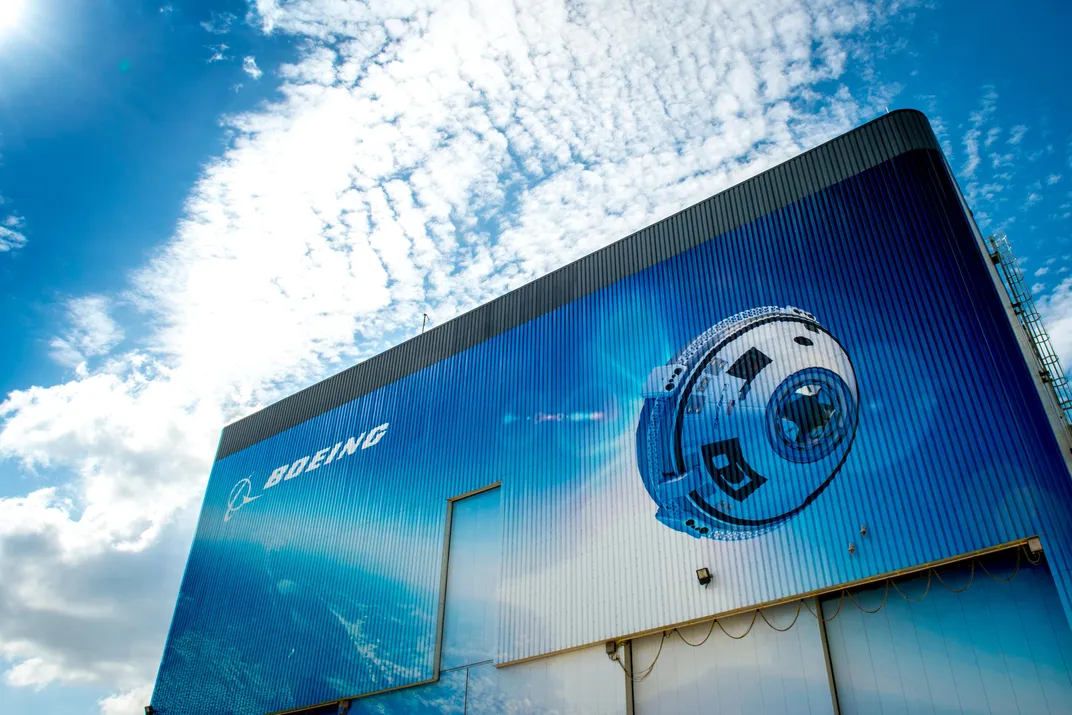
Although the spacecraft will fly on proven rockets—a United Launch Alliance Atlas V for Boeing’s CST-100 Starliner and an in-house Falcon 9 for SpaceX’s Crew Dragon—virtually everything else about the two capsules is brand new. Heat shields, abort systems, parachutes, seats, controls, and displays have all been developed by teams at each company. Even the spacesuits the astronauts will wear for launch and reentry are either Boeing or SpaceX brand.
At the intersection of NASA’s ambitions and the private companies’ commercial goals stand four people. Since 2015, astronauts Eric Boe, Bob Behnken, Suni Williams, and Doug Hurley have worked with and trained on both spacecraft. Now their training programs will diverge. Boe and Williams will continue to train for the Starliner; Behnken and Hurley, for Crew Dragon.
Altogether nine astronauts have been assigned to the first two flights for each spacecraft. Three are rookies from the 2013 astronaut class: Nicole Aunapu Mann, a former Marine F/A-18 pilot, will fly on the maiden flight of Starliner; Josh Cassada, a physics Ph.D. and Navy P-3 Orion commander, will join Suni Williams on the second Starliner mission; and Navy F/A-18 pilot Victor Glover will fly on the second SpaceX mission, along with veteran astronaut Mike Hopkins.
Joining astronauts Boe and Mann on the Starliner’s first voyage is Boeing’s own director of crew and mission operations, Chris Ferguson. Ferguson, who spent 13 years at NASA, gained spaceflight experience on three shuttle missions, including as commander of the final mission to the station, STS-135. He’d like to be the first one back. But STS-135 pilot Doug Hurley shares that ambition. The race between Boeing and SpaceX to be the first U.S. spacecraft to carry Americans to the station has become in a sense a race between these two men.
Earlier this year in Houston, I spoke with the four original commercial crew astronauts about their experiences working with Boeing and SpaceX.
Autopilot into Orbit
As I squeeze myself into a mock-up of Boeing’s Starliner capsule at Johnson Space Center, the spartan functionality of spaceflight hits home. Despite its sci-fi name, the Starliner feels light years less futuristic than the iconic 1970s-era space shuttle. The capsule is a small, cramped, tin can of a spaceship, the spiritual heir to the Apollo Command/Service Module of half a century ago. Boeing says the cubic-footage of the Starliner is proprietary but that it’s designed to seat seven plus cargo; Apollo, with a volume of 218 cubic feet, had space for only three.
Whereas the shuttle landed precisely on runways before cheering crowds, the commercial capsules will float down on parachutes to oceans or lonely desert sands. In a second indignity to pilots, the highly automated spacecraft are designed to operate without human control, from their launch in Florida to the cracking of their hatches after returning to Earth.
“It’s your Uber ride to space!” says Kavya Manyapu, a flight crew operations and test engineer for Boeing, as she guides me into the Starliner commander’s seat. Above me is a surprisingly small bank of buttons and dials. “The vehicle flies autonomously, so the control panel is on a diet when compared to the shuttle,” says Manyapu.
Starliner’s 21st century diet includes Samsung tablets in place of the shuttle’s library of procedural books, while SpaceX’s Dragon boasts expansive touchscreens that would not look out of place on the dashboard of a Tesla. One of my first questions to the astronaut cadre—all former military test pilots and shuttle crew—is whether this shift to automation diminishes their role.
“We’re transitioning to allow humans to do things that they’re good at, like recognizing when something’s not quite right,” says Behnken, veteran of two shuttle flights. “What we’re not good at is monitoring one parameter for hours and hours to make sure it’s perfect. Computers are better at that. The challenge is ensuring you have human intervention capability at the right place.”
Both spacecraft will have manual controls to allow the astronauts to take over operations, like docking with the space station, if the spacecraft’s automated systems fail at the last minute.
“Automation is good, but it’s nice to know what it’s doing,” says Williams, the astronaut from this group with the most time in orbit, 322 days, and the only one who has flown on Soyuz as well as the shuttle. We “should be part of the system,” she says. “That’s obvious for Boeing because that’s the way they’ve done things in the past. I don’t think it’s the goal of SpaceX, just because their satellite [launches] and cargo vehicles have been automated.”
Automating some aspects of flight to the ISS could be a blessing to astronauts. Depending on the orbital mechanics, the journey can be as brief as six hours or as long as 48. Williams says the longer flights afford astronauts the opportunity to unlatch from their seats and stretch their legs—both SpaceX and Boeing’s designs give the crew of four enough space to do so. But it’s only on the flights that span a full day or longer that astronauts would have enough time to complete their menu of systems checks and then close their eyes and try to relax.
Williams expects the in-flight protocol on both new spacecraft will be similar to what she experienced flying on Soyuz in 2012. “Whenever there’s [an engine] burn, they don’t really want you moving around,” Williams says. Soyuz flights used only ground-side communication, so there were periods when communication was interrupted. That won’t be an issue on the new spacecraft unless there’s a problem—they’ll use satellite relays to keep in touch, just as the space shuttle did.
There’s generally a buddy system in place for when crew members wish to take their suits off. Only one person starts taking a suit off at a time, and at least one person stays in communication with ground control at all times via their in-suit radio. Open channels in the cockpit result in a noisy echo, like when people phoning into a radio talk show leave their radios turned up at home, so generally the crew will not switch on the cabin speakers until all astronauts have taken their suits off, assuming the flight is long enough to permit that.
Taking the suit off and putting it back on is a cumbersome, time-consuming procedure, so on a shorter flight, the entire crew might remain strapped in for the duration. When an astronaut is wearing a suit, the umbilical line to feed the internal air conditioning system must stay attached. “It’s a pressure suit, so it doesn’t breathe so well,” Williams says.
The Soyuz crew consists of a commander and flight engineer. (The commander will typically have done the other job on a prior mission.) On shuttle flights, the terminology was different—commander and pilot—but the division of chores was similar: The pilot (or flight engineer) monitored the guidance systems and navigation controls, and the commander ran checks on the systems, including the docking system. (The commander also landed the space shuttle.)
Williams believes the crew responsibilities will be similar on the two commercial spacecraft the four astronauts have been working with. Even though SpaceX founder and CEO Elon Musk has made no secret of his plans for lofting inexperienced passengers into space, either as tourists on jaunts around the moon or colonists on a one-way trip to Mars, Williams speculates that even those passengers would likely require at least some rudimentary training; certainly something more robust than the short safety briefing airline passengers often ignore. Otherwise, she points out, another member of the flight crew would be obliged to keep tabs on them.
Musk’s enthusiasm for turning spaceflight into a tourist enterprise contrasts starkly with Boeing’s decades of work as a contractor on almost every major U.S. space program. “When we go to SpaceX, we’re the oldest people in the room, by 20 years in some cases,” says Doug Hurley. “And the pace that they move at! I’ve never seen anything like it. That’s a good thing and maybe not such a great thing at times. Whereas at NASA and Boeing, it’s a little bit more of a measured pace.”
“SpaceX is more like a dot-com,” agrees Williams. “They’re awesome and innovative and unencumbered and can come up with interesting new ways of thinking about solving problems. [But] sometimes they don’t know what they don’t know because of trying to be more innovative and shutting out experience.”
The cultural disconnect can be mutual. In May, Elon Musk told reporters, “Sometimes, to be totally frank, just like a friend that really cares, [NASA] can be a pain in the ass—but I love NASA so much.”
All four astronauts insist that they have no preference for either spaceship and that both companies have been responsive to their comments and suggestions during the development process. “They’re very different in a lot of ways,” says Boe, a pilot on two shuttle missions. “But as time goes on, I see the companies getting closer to each other.”
Williams says she didn’t spend much time mulling over whether she’d prefer to fly Team Crew Dragon or Team Starliner. What she has been thinking about is that, now that assignments have been made, she’ll be saying good-bye to (roughly) half the people she’s gotten to know at work over the last three years.
One thing both companies have in common is that they are working to reduce risk in an enterprise inherently risky. “One of the reasons why we’re at the companies is so that they can put a face to the person who’s going in the spacecraft,” says Williams. “I hope that makes people throttle back a second and make sure they’re crossing the ‘T’s and dotting the ‘I’s.”
For the first time ever, NASA will evaluate commercial craft according to the likelihood that the crew could be lost. If the companies cannot get the odds of a fatal incident below one in 270, the agency could refuse to certify their spacecraft for human spaceflight.
Both providers still have work to do to make NASA comfortable. The agency has pointed out concerns to SpaceX about the Falcon 9 rocket relating to a fuel pressure vessel that led to a dramatic launch pad explosion in 2016, as well as cracks in the engine turbines spotted during testing. SpaceX redesigned the rocket and successfully launched it in early May, but NASA wants to see at least seven launches of the redesigned Falcon before it will consider allowing astronauts to travel on it. The space agency has also expressed unease about SpaceX’s plan to fuel the Falcon 9 after the astronauts are already on board, and has asked SpaceX to similarly demonstrate five successful fueling runs before the astronauts fly.
Boeing has hurdles to clear too. NASA simulations suggest that an abort system intended to pull the crew capsule to safety in the event of an accident could tumble dangerously. The Government Accountability Office has also cited concerns that the Starliner’s heat shield might damage the capsule’s parachute system during reentry. Rebecca Regan, a Boeing spokesperson, says the company’s analysis indicates a small chance of contact between the heat shield and part of the parachute system only if the chute on the forward heat shield does not deploy. Boeing believes this contact would not harm the vessel or the crew, and its ongoing testing is geared toward showing “that any potential contact is non-detrimental,” Regan says.
The Crew Dragon spacecraft has been delivered to Cape Canaveral since completing testing at NASA’s Plum Brook Station in Ohio last July.
“One of the hardest things is characterizing risk,” says Boe. “When my class of astronauts in 2000 showed up at NASA, they said that the shuttle’s loss of vehicle risk was one in 400. We’d already had Challenger, and then Columbia happened, and the number changed pretty quickly to one in 50. The [commercial program] numbers are more for building in the right direction so you get a safer vehicle. The actual one in 270 is like throwing a dart at a board.”
“I’m not that worried about the stuff that’s at the top of the worry charts,” says Hurley. “It’s the other stuff, the little things, the unknown unknowns [where] you just have to trust that everybody’s doing their job right.”
Williams says confidence in one’s colleagues is what allows an astronaut to push aside thoughts of the enormous physical risks they’re taking. “Space is awesome,” she says. “I wouldn’t trade it for anything. But it’s absolutely dangerous. You put high pressure helium tanks inside liquid oxygen—what are you, crazy? Those are huge risks, but I feel so comfortable with the people at both companies and at NASA.”
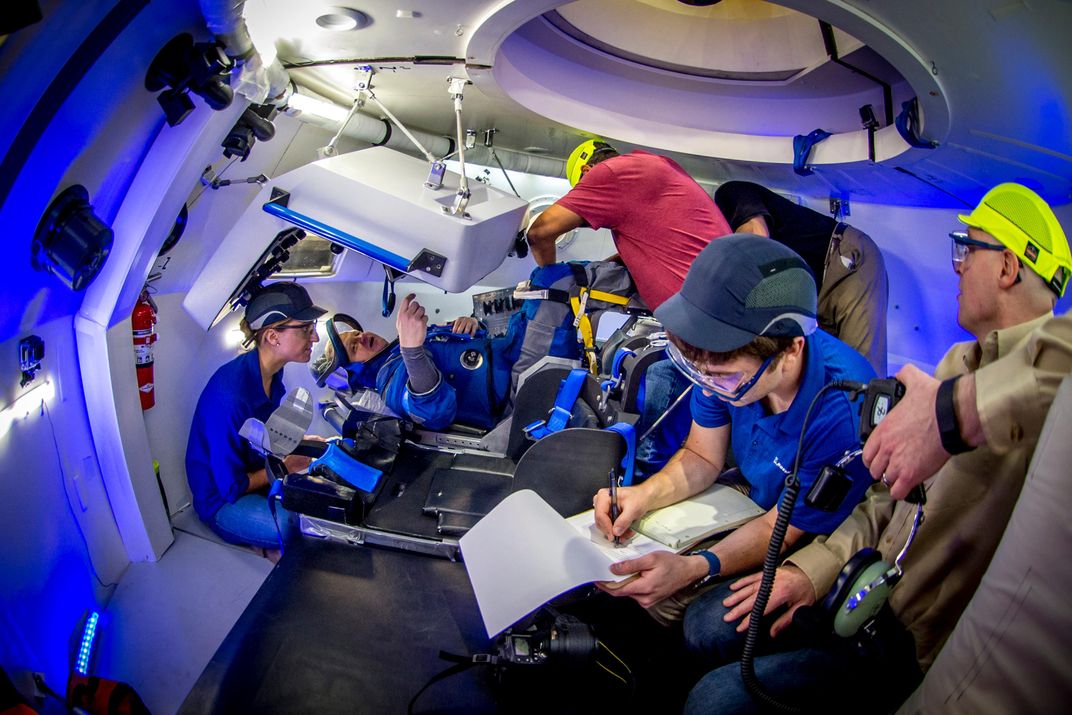
Loose Lips Sink Spaceships
While dealing with risk has always been part of being an astronaut, the Commercial Crew Program introduced something unfamiliar to NASA—secrecy. A knowledge firewall exists between SpaceX and Boeing, with the astronauts strictly forbidden from discussing one company’s technology with the other. “The hardest part is not sharing between the two,” says Boe. “If you’re talking about one suit, you have to be careful you don’t talk about the other one, which is proprietary.”
The astronauts are free to share experiences from their past work and from the Orion program, a larger spacecraft being designed by NASA for deep-space missions. But sensitive details do occasionally slip out, says Williams: “It has happened in the program before. I find myself sometimes being a little more quiet than I have been on other training programs just because I have to remember whose [technology] it is.”
Another novelty for the astronauts is having to consider finances. The space shuttle cost over $1.5 billion per launch, because, in part, NASA and its contractors worked under “cost plus” contracts that allowed both sides to keep tacking on features as the program evolved. SpaceX and Boeing have no such luxury. They are constrained to between $500 million and $800 million for each of their six missions. “You can go in and say, ‘Hey we want to do this,’ but there are some realities that everyone has to face because it’s a fixed-price contract,” says Boe.
The origins of the Commercial Crew Program stretch back over a decade, to a conversation between NASA’s head of human exploration, Bill Gerstenmaier, and Kathy Lueders, then in charge of transportation to the ISS. “That was when we really started to dream about what we wanted the ISS to be, how it could be used and then how that impacted our cargo requirements,” says Lueders. NASA kicked off a commercial cargo program with SpaceX and Orbital Sciences, awarding fixed-price contracts for two-way cargo missions to the ISS. The agency also handed over reams of data from Apollo relating to high-speed capsule reentry.
“The two providers didn’t even have proven launch vehicles [at the time],” says Lueders. “It was a huge, huge leap for us, but look at what we’ve reaped from a national perspective! It created that market and set [us] up for CCP.”
Although the Commercial Crew Program is similar to the cargo program, it adds a certification phase to reduce risk for astronauts. The program made cash awards to six American companies starting in 2010 before finally settling on Boeing and SpaceX in 2014. “We learned from cargo that competition is super important,” says Lueders, who is now the CCP program manager. “It’s about getting them both to stand on their own two feet and fly successfully. That’s what enables a commercial market.”
Not that NASA has given up developing its own capabilities. Orion will be the agency’s primary vehicle for future moon and possibly Mars missions, launched atop NASA’s own Space Launch System (SLS). Orion, another space capsule, was announced in 2004—four years before the first SpaceX rocket reached orbit—and should have its own first crewed launch by the end of 2023.
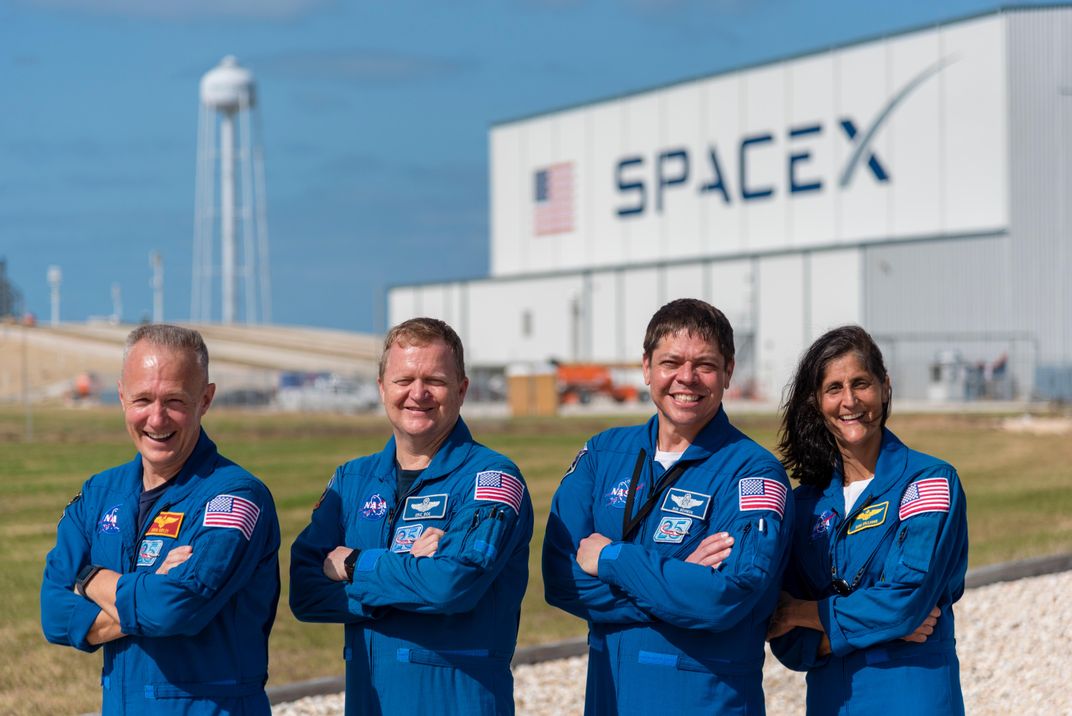
That extended development process produced lessons, particularly around displays, interfaces, and parachutes, that benefited both SpaceX and Boeing, says Behnken: “We’ve really leveraged Orion to make both providers more successful, just by understanding another vehicle.”
That is not to say that the crew program is immune from NASA’s infamous delays. The two companies were initially required to provide NASA with all the evidence (including test flights) needed to certify their spacecraft by 2017. The GAO report released in July highlighted the likelihood that certification might slip into 2020 or later and recommended NASA explore some way of ensuring continued ISS access once its agreement with the Russians runs out next year.
“We can stretch out increments to probably push that out to some degree,” says Hurley. “You don’t want to have the ISS dependent on [the commercial crew’s] early flights. If you get put in that position, that’s one thing, but you certainly want to try to avoid that.”
Either way, the race to fly a new American spacecraft back to the ISS is now entering its final stretch. Plans call for the first U.S. crew to make it back to the space station on a U.S. spacecraft to recover an American flag left there in 2011 by Chris Ferguson when he commanded the final shuttle flight.
“Both companies would like to be the first to fly,” says Lueders. “That would be a big deal for them.” But she adds, “They realize that they both need to be successful. It doesn’t do Boeing any good for SpaceX to have failures, because it just points fingers to the market as a whole.”
NASA is already thinking of missions beyond the Commercial Crew Program. The current plan is for direct federal funding of the ISS to stop in 2024, at which point the station’s future is unclear. NASA has been tasked with exploring the possibility of selling the station to a private company, but the likelihood of any private entity taking on the cost of its upkeep seems small. “Once we certify their spaceships, Boeing and SpaceX will go out to talk to other countries, companies, and individuals,” says Boe, adding that this shift will “probably happen sooner rather than later.”
While the high-tech Starliner and Crew Dragon might not dramatically change the role of the astronauts who ride in them, the Commercial Crew Program is changing NASA. If the program is successful, there will be no turning back. A proven ability to develop safe spacecraft cheaper and faster than a traditional NASA program will not be ignored. Already, new NASA administrator Jim Bridenstine has said, “The model [for the commercialization of low-Earth orbit] can be extended to and around the moon and deeper into space, including Mars.”
“Leveraging commercial to conduct the whole mission opens our aperture on the ability to then do even more difficult missions,” agrees Lueders. “For us to go to the moon or Mars, we know that it can’t just be SLS and Orion. It’s got to be SLS and Orion and other launch vehicles and other capabilities and lots of other companies out there with their ideas.”
Unlike the agency’s international collaborations on the ISS, the Commercial Crew Program is a domestic effort, one that has become a symbol of a resurgent national identity. Its success will be measured by the number of U.S. companies sparking new commerce in orbit.
“A lot of people think that NASA doesn’t even have astronauts in space,” says Boe. “Seeing [launches] in Florida again and being able to watch and be a part of it will bring back the excitement. It’s awesome. I pinch myself every day when I get up.”
Although a capsule atop a rocket might not be as glorious a sight as a space shuttle launch, the resumption of blastoffs from the cape will generate excitement. But about what, exactly?
Until the astronauts and the public become familiar with two new spaceships, no one knows for sure.
This article appears in the feature series American Spacelines. Click to read more about the future of U.S. human spaceflight.
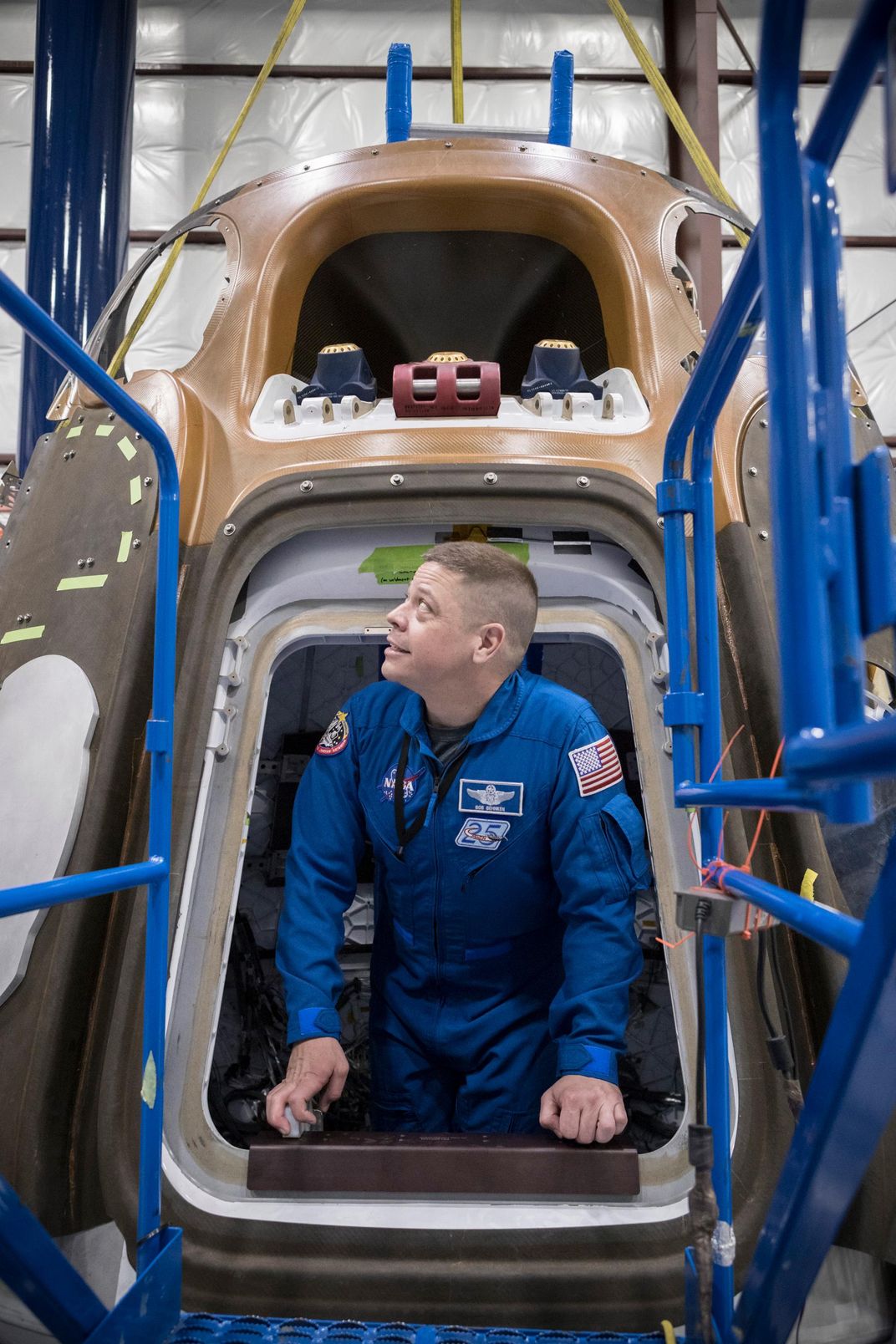


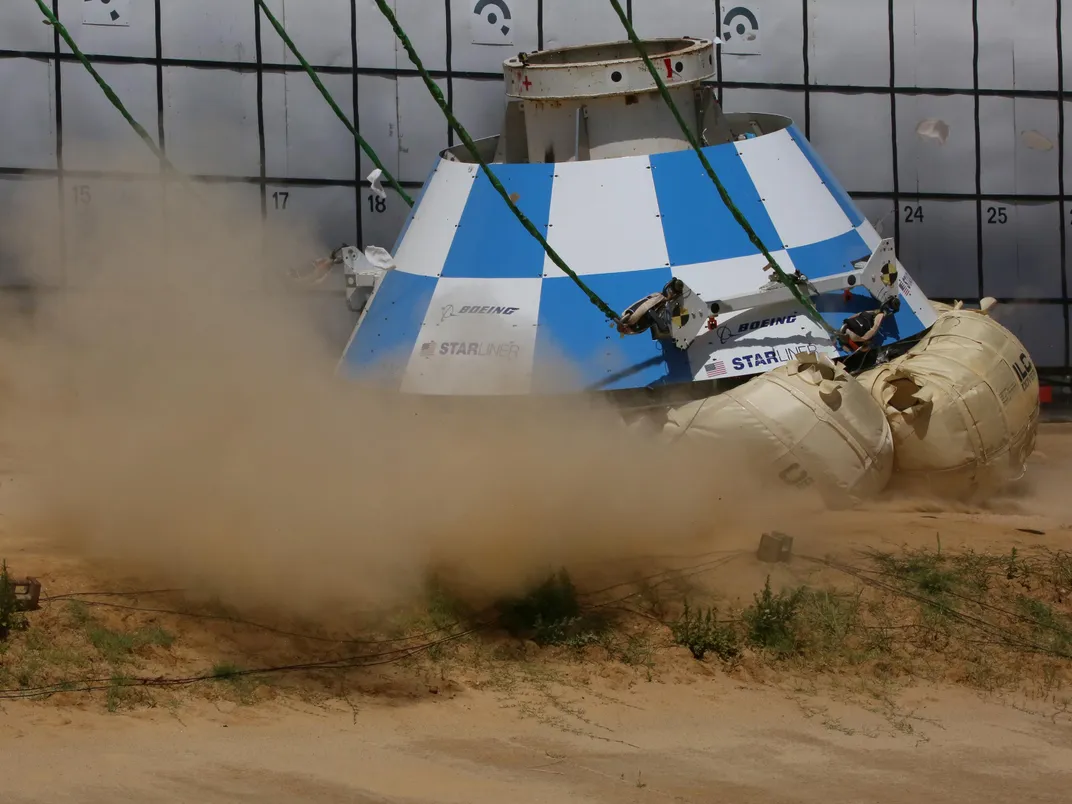

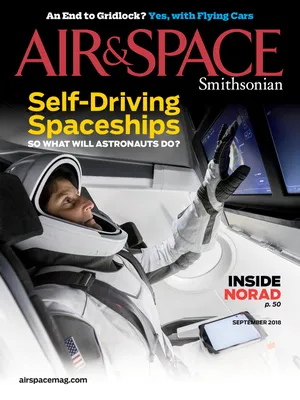
:focal(2367x719:2368x720)/https://tf-cmsv2-smithsonianmag-media.s3.amazonaws.com/filer/06/73/06734433-e27d-4537-8868-f785f347b2bf/03b_on2018_spacexaborttest_live.jpg)